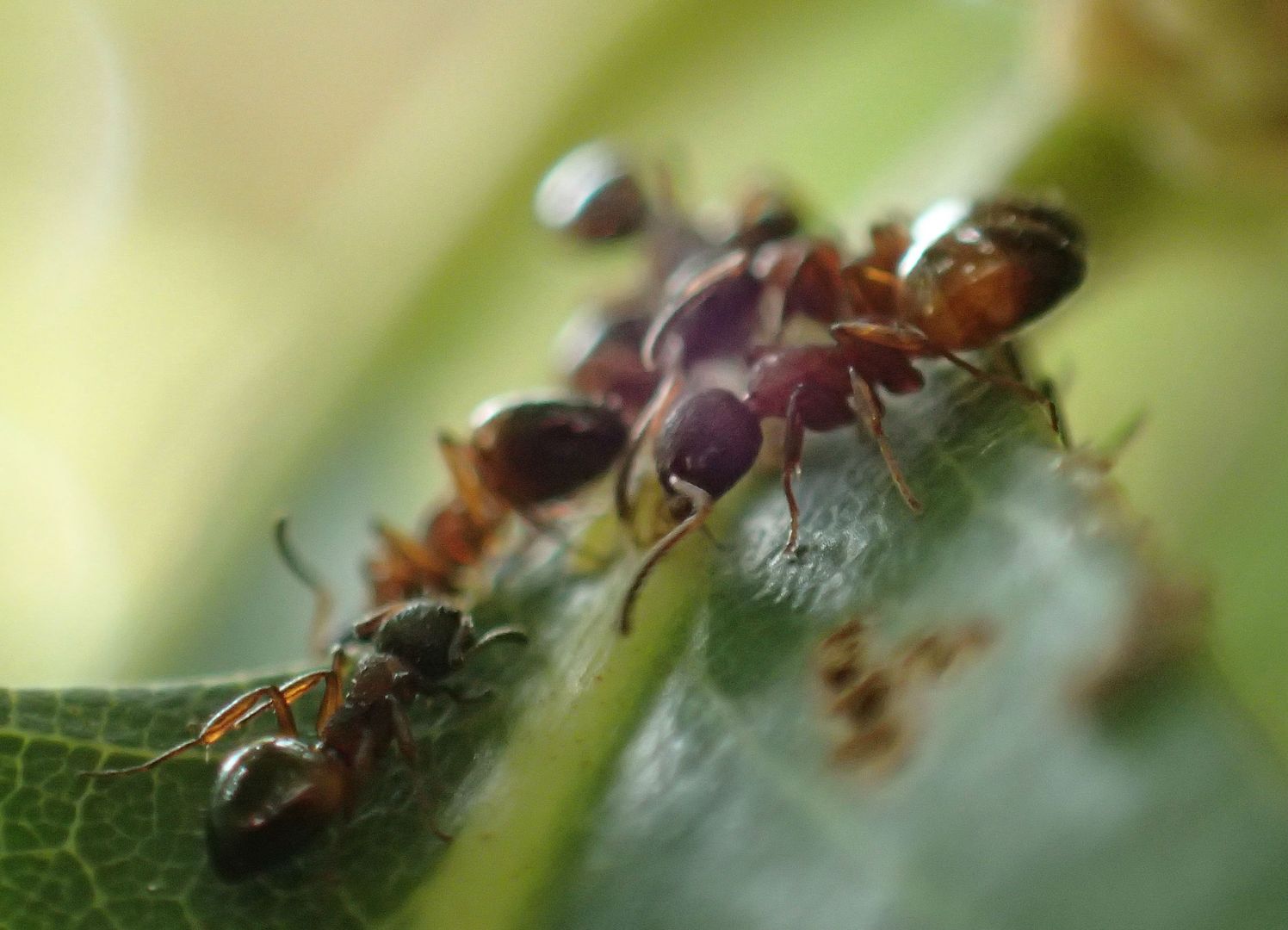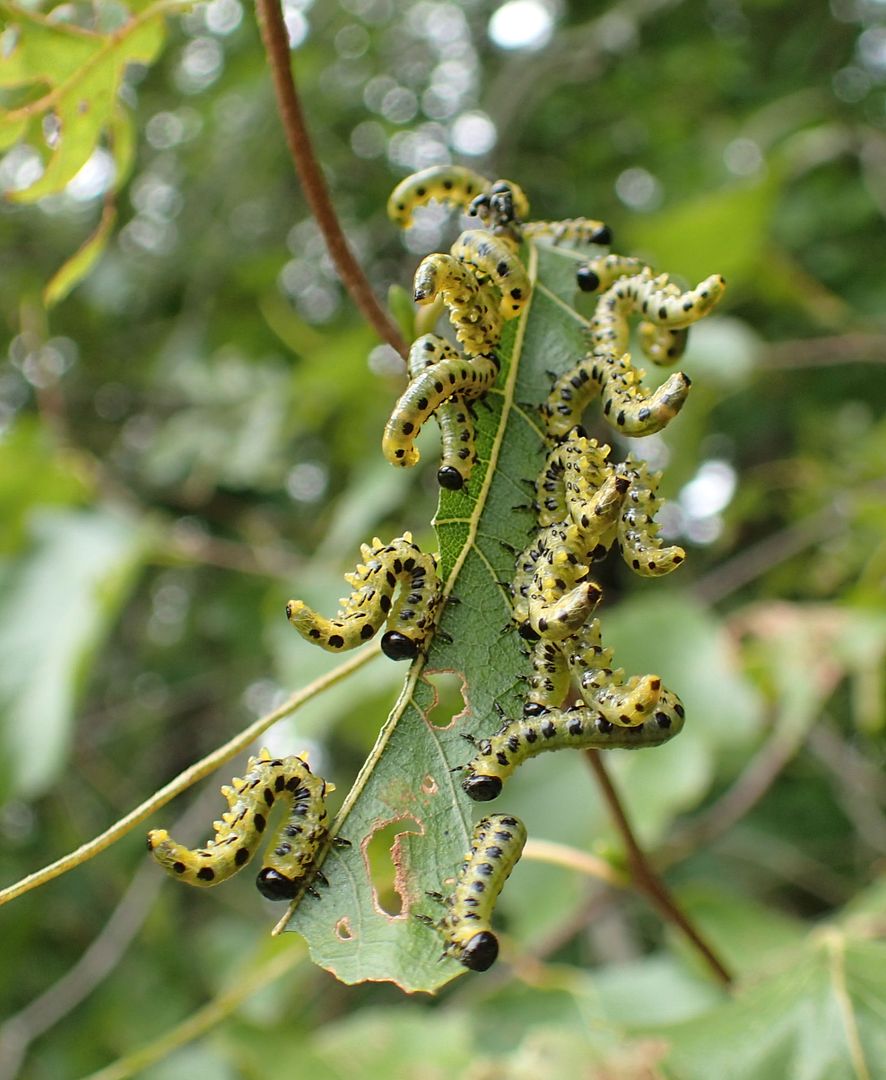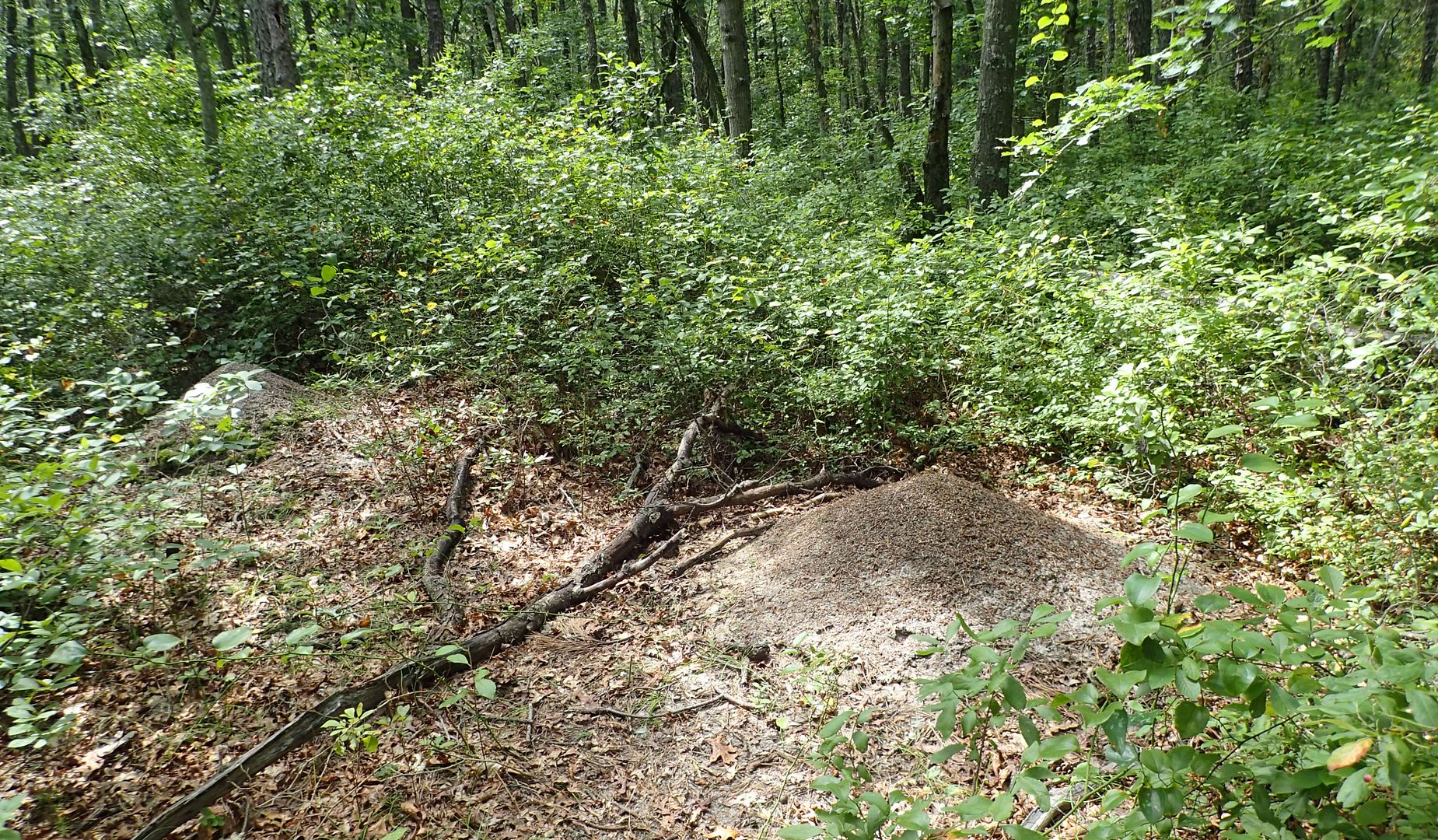Tuesday, August 29, 2017
This Week in Anting 08/28/2017
Finally got around to visiting Turkey Swamp Park this year and a few other locations around that county.
Formica integra, were still there with foraging "trunk" trails. These are well maintained trails made by ants that tend to be in the same place every year. The ground around them is actually compacted down, not from the weight of the ants but because they're so good at clearing everything else away it's on the compacted parts that stay. The trail also ventures underground every few feet.
Dolichoderus plagiatus, are a species I've been calling "cone ants" but that almost as generic as calling them "black ants." The cone though refers to a hump-like structure on their mesosoma. This isn't visible in the photo above but online images of them show it more clearly, see here. Of the four Dolichoderus species in the US this is certainly one of the most colorful. They have bright orange spots that are sometimes full stripes on the gaster which goes well with the rest of the body which ranges from red/brown to black.
Oak Trees were full of life. White Oak in particular was bustling with caterpillars and aphids being tended by ants.
Another tree I couldn't identify was loaded with sawfly larva.
The Formica exsectoides mounds are still there. They weren't that active though. We went on too nice of a day it seems because for once you couldn't hear the leaves rustling from millions of ants crawling around. (I want my money back!)
Plant wise, I found a stand of Swamp Loosestrife, Decodon verticillatus, which is an uncommon aquatic wildflower. It has a wide distribution across most of the eastern US and Canada. It was bustling with bees and several butterflies.
Trachymyrmex septentrionalis, the Northern Fungus Farming Ant, likes to nest in sandy soil along odd types of scrub land where strange plants tend to grow. Prickly Pear is the only one I could really identify but there were lots of odd plants that might be mosses or are low growing conifers that barely push out of the ground and have compound leaves.
We also found a few colonies in an adjacent field where a patchy not so lush lawn was grown... I'm not sure if it's patchy because no one's water and maintaining it, or because the tiny leaf cutter ants are slowly stripping it. Whatever the case, these are ants of dry sandy settings in full sun where resources might be limited. They thrive here because they focus on other types of food, namely a kind of fungus they maintain by fertilizing with flower petals, bits of foliage, and the frass of caterpillars and grasshoppers.
These are small ants verging on 3 to 4 mm long. And even within that the workers vary somewhat within the same colony.
As far as ants in the North East go they're easy to identify. Their heads have spines on them, and their mesosoma has several small sets too. Their color is a unique orange/brown tone and parts that verge on being purple.
Also when they dig they also gather up the dirt in clumps, making their mounds somewhat unique.
We also found lots of mushrooms.















